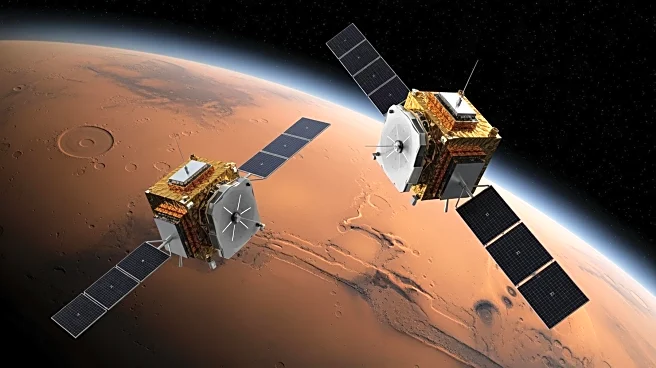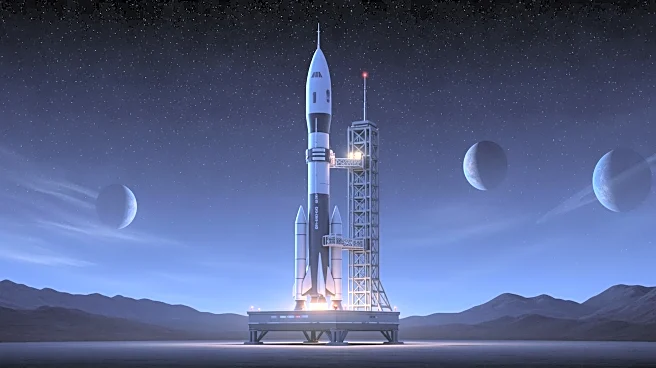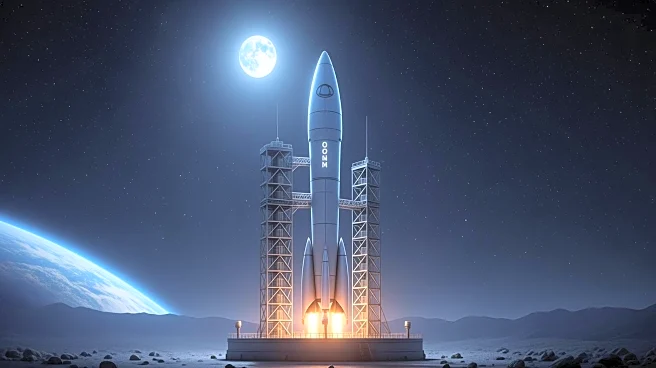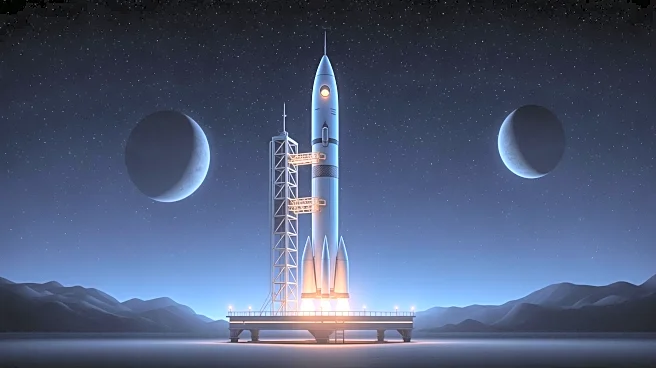What's Happening?
NASA is set to launch the ESCAPADE mission, involving two identical satellites, to study how Mars lost its thick atmosphere and liquid water. Scheduled for launch on November 9 aboard Blue Origin's New
Glenn rocket, the mission aims to provide a 3D view of how the solar wind affects Martian air. The satellites, named Blue and Gold, will orbit Mars in tandem, offering a stereo perspective on atmospheric escape processes. This mission marks NASA's first dual-satellite mission to another planet, with the goal of understanding the climate evolution of Mars.
Why It's Important?
The ESCAPADE mission is significant for understanding Mars' transformation from a potentially habitable planet to its current state as a frozen desert. By studying the solar wind's impact on Mars' atmosphere, scientists hope to gain insights into the planet's past climate and the potential for life. The mission's findings could also inform future human exploration by improving communication and navigation systems on Mars. Additionally, the mission's innovative approach to reaching Mars could influence future space missions, making them less dependent on specific launch windows.
What's Next?
After reaching Mars in September 2027, the ESCAPADE satellites will spend several months fine-tuning their orbits before conducting joint observations. The mission will explore key questions about Mars' magnetic field and atmospheric dynamics over approximately 11 months. The results could provide valuable data for future missions and contribute to the broader understanding of planetary atmospheres and solar interactions.
Beyond the Headlines
The ESCAPADE mission highlights the growing interest in Mars exploration and the potential for international collaboration in space research. The mission's success could pave the way for more complex missions to Mars and other planets, potentially leading to new discoveries about the solar system. The data collected may also have implications for understanding Earth's atmospheric processes and the effects of solar radiation.











